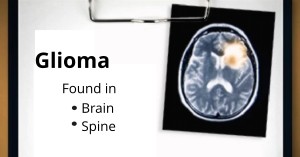Glioma Newport Beach & Orange County, CA
Glioma Treatment in Orange County
 Glioma is a malignant type of primary tumor that occurs in the brain and spinal cord. Gliomas form from the glial cells, the tissues that surround and support the brain neurons.
Glioma is a malignant type of primary tumor that occurs in the brain and spinal cord. Gliomas form from the glial cells, the tissues that surround and support the brain neurons.
A glioma is a primary brain tumor that originates from the supportive cells of the brain, called glial cells. Glial cells are the most common cellular component of the brain.
There are three principle types of glial cells: astrocytes, oligodendrocytes and ependymal cells. There are five to 10 times more glial cells than neurons. Glial cells have the ability to divide and multiply, unlike neurons. If this process occurs too rapidly and uncontrollably, a glioma forms. Gliomas are also classified by the type of cells they affect. In some cases, tumors can have mixed features and therefore be named mixed glioma:
Types of Gliomas
Astrocytoma- The most common type of glioma that develops in the connective tissue cells called astrocytes.
Glioblastoma Multiforme- This is high-grade astrocytoma and the most malignant form of glioma.
Brainstem Glioma- The glioma that develops in the brain stem.
Ependymoma- The glioma that develops from ependymal cells.
Mixed Glioma- The glioma that develops from more than one type of glial cell.
Oligodendroglioma- The glioma that develops in the oliogendroctyes, the supportive tissue cells of the brain.
Optic Nerve Glioma- The glioma that develops in or around the optic nerve.
Robert Louis, MD, a fellowship-trained Orange County Neurosurgeon, is the Director of the Skull Base and Pituitary Tumor Program at Hoag Memorial Hospital in Orange County, California. Dr. Louis has particular expertise in the endoscopic and minimally invasive treatment of benign and malignant brain tumors, sellar and parasellar tumors, and skull base tumors.
Dr. Robert Louis specializes in minimally invasive brain surgery for the treatment of glioma. For appointments, please call (949) 383-4185 or Contact Us.



